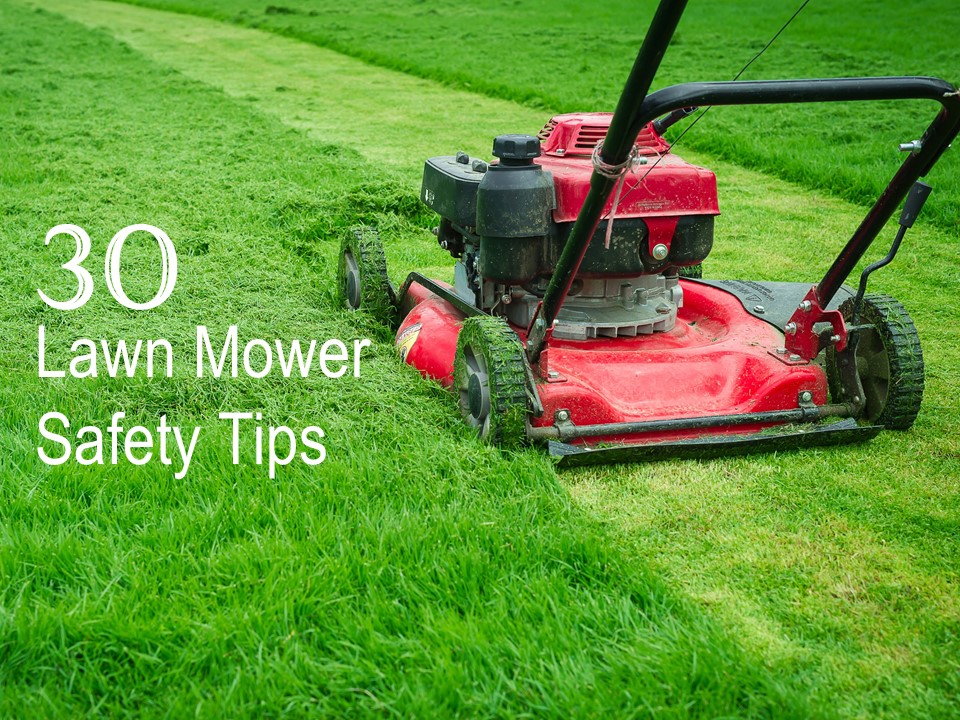30 Lawnmower Tips for Before, During, and After You Mow

In the warm weather months, many Saturday mornings in Atlanta are heralded with the drone of the lawnmower. How many of these lawnmower owners have taken the time to make sure their machine has been stored safely? And how many know the fire hazards surrounding lawnmower storage and repair? Be informed! Here’s what you need to know about storage, handling the gasoline, and operating your lawnmower safely this spring.
Before the first mow:
- If you don’t do maintenance yourself, take your lawnmower to a shop for tune-ups and repairs.
- Make sure the blades are sharp and not damaged.
- Make sure the blade guards are in place
- Make sure your lawn is dry before mowing. Damp grass can damage the mower.
- Check the gas and oil. If there is gasoline left over from last summer and you didn’t use a fuel stabilizer, it will need to be changed.
- Make sure the emergency shut off valve is working and not damaged.
- Check the wheels and make sure they roll easily and aren’t loose enough to come off while you’re mowing.
- Replace the fuel line at least every other year to prevent the hazard caused by rotten fuel lines leaking or sending rubber bits into the carburetor.
While you mow:
- If the blade or grasses chute needs to be cleaned, stop the mower engine. Never
adjust, clear obstructions, or place any part of your body under a running lawn mower. - Disconnect the spark plug before reaching under the mower or before turning it up to look under it.
- Don’t use the trick of taping the
shut off handle down so you can run the mower without holding it. You’ll lose control of your mower. - Cut across hills and slopes, not up and down.
- If you need to add gas in the middle of a mow, stop the lawnmower and let it cool for at least 20 minutes—longer is preferable. A hot engine can ignite the gas fumes or any gasoline that spills.
- Empty the grass catcher device often so the mower won’t tip over—with you!
- Watch your oil level. If the level of your gas tank drops while the engine is at rest or you see the level of your engine oil has risen, or if you smell gas on your dipstick, do not use the machine until it can be repaired.
- If your engine spews liquid out of the muffler at
startup, or begins to falter or smoke when running, your carburetor may have failed and needs to be inspected or repaired. If the gas has mixed with the oil, you may think it is just oil leaking, but it can be the oil and gas has mixed. Do not use until you’ve’ identified and corrected the problem.
Cleanup:
- Allow the mower to cool for at least 20 minutes. Take this time to rake or clean up the yard.
- After disconnecting the spark plug wire, clean off any buildup of dirt or grass from the mower. It only gets harder to do that later.
- Once the mower is cooled, fill the oil and gas levels to the recommended marks.
- Make sure you close the lid tightly on the gas can before you put it away.
Safe Storage between uses, and in the off-season:
- Don’t store gas or other flammables in a storage shed that’s connected to your house.
- Remove old fuel from the gas tank.
- Drain the carburetor fuel bowl.
- Disconnect the battery.
- Change the oil.
- Read the owner’s manual for your brand’s exact recommendations.
- Add fuel stabilizer to your gas can at each fill up at the gas station. It prevents water from forming in the gasoline.
- Smell for fresh gasoline. If you smell fresh gas on your machine or storage area, roll the machine outside. Empty the gas, or call a pro for service.
- If you suspect any problems with your lawnmower, or you smell gas after using it, do not store it indoors. Call an expert for help.
- Call EMC Security to make sure your home is protected with fire detection devices.
